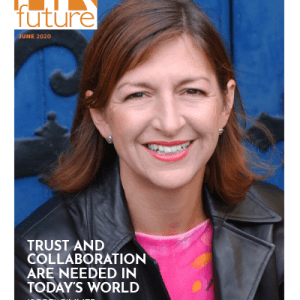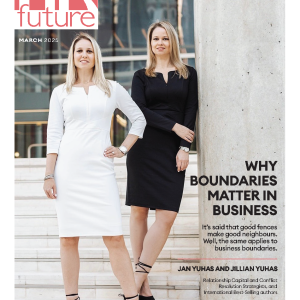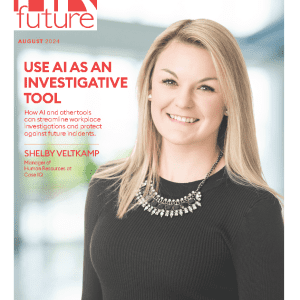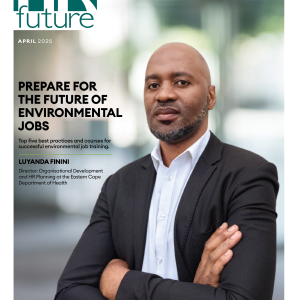In today’s fast-paced corporate world, innovation is the lifeblood that fuels growth and competitive advantage. Yet, many organizations find themselves mired in a creativity crisis, with traditional thinking patterns, risk aversion, and the confining structure of office environments stifling the generation of new ideas. This stagnation not only impedes business development but also diminishes employee engagement and job satisfaction, creating a cycle of unproductivity and mediocrity.
Several factors contribute to this creativity shortfall. Routine work processes and a focus on efficiency often prioritize short-term results over long-term innovation. Fear of failure and a culture that doesn’t reward taking risks further discourage creative ventures. Moreover, the physical workspace itself—characterized by cubicles and isolation—can limit collaborative opportunities and the spontaneous exchange of ideas.
Recognizing the depth and breadth of this crisis is only the first step. The path forward involves a strategic rethinking of how creativity is cultivated within teams and throughout the organization. Herein lies the untapped potential of team activities—not just as brief respites from the daily grind but as foundational strategies for reigniting the creative spark. By fostering environments that encourage collaboration, experimentation, and the free flow of ideas, companies can begin to dismantle the barriers to innovation.
Team activities, carefully chosen and thoughtfully implemented, can serve as the catalyst for this transformation. From collaborative workshops to cross-functional challenges, these activities are designed to pull employees out of their comfort zones, encourage dynamic thinking, and, ultimately, spark the innovative ideas that will propel the organization forward.
The Impact of Environment on Creativity
The environment in which we work can significantly influence our capacity for creativity and innovation. Traditional corporate settings, often characterized by rigid structures and a lack of stimulating visuals, can inadvertently suppress the creative potential of employees. This section explores the dynamic relationship between the workspace and creative output, emphasizing the importance of designing environments that foster innovation.
Physical Space and Creative Thought: Research has shown that physical environments that are open, filled with natural light, and offer access to nature can enhance creative thinking and problem-solving abilities. Spaces that allow for movement, collaboration, and relaxation can interrupt the monotony that often stifles creativity. For example, Google’s campus, with its emphasis on open spaces, recreational facilities, and nature integration, is designed to stimulate innovation and spontaneity among its employees.
Cultural Atmosphere: Beyond the physical layout, the cultural environment plays a crucial role in either nurturing or hindering creativity. A company culture that values diversity, encourages experimentation, and views failures as learning opportunities is more likely to foster innovative thinking. In contrast, environments where judgment, criticism, and adherence to the status quo predominate can significantly dampen the creative spirit.
The Role of Autonomy: Empowering employees with the autonomy to explore their ideas, manage their workspaces, and choose how and where they work can lead to higher levels of creative thinking. When individuals feel trusted to take risks and make decisions, they are more likely to propose novel ideas and solutions.
Team Activities and Environmental Transformation: Introducing team activities that challenge conventional work patterns can transform the workplace environment into a catalyst for creativity. Whether it’s team brainstorming sessions held in outdoor settings, innovation workshops in creatively designed spaces, or cross-departmental collaborations that break down silos, these activities can rejuvenate stagnant spaces and inspire fresh thinking.
Creating an environment conducive to creativity requires intentional design choices and a commitment to fostering an inclusive, empowering company culture. By reimagining the workspace—both physically and culturally—organizations can overcome environmental barriers to creativity, unlocking the innovative potential of their teams and paving the way for groundbreaking ideas and solutions.
Team Activities as Catalysts for Creative Thinking
Team activities, when thoughtfully implemented, serve as powerful catalysts for creative thinking and innovation within organizations. These activities are designed not just for entertainment but to stimulate the cognitive processes that underpin creativity, enhance team dynamics, and break the routine that often leads to a creativity crisis. Here’s how various team activities can rekindle the spark of innovation:
Cross-Functional Team Challenges: Encouraging teams from different departments to collaborate on challenges or projects can dissolve the silos that often hinder innovation. These activities foster a melting pot of ideas, where diverse perspectives and expertise converge, leading to novel solutions that might not emerge within the confines of a single department.
Brainstorming Sessions in Unconventional Settings: Taking brainstorming sessions outside the traditional boardroom and into more stimulating environments—be it a park, a museum, or even a retreat in nature—can dramatically shift perspective and inspire creative thinking. The change in setting can help employees relax and engage parts of their brain that are less active in conventional work environments.
Creativity Workshops: Workshops that focus on creative skills like design thinking, improvisation, or even artistic endeavors encourage employees to think differently and be open to new experiences. These sessions not only provide tools for creative problem-solving but also reinforce a culture that values and nurtures creativity.
Innovation Sprints: Modeled after the tech industry’s hackathons, innovation sprints can be tailored to any sector. These time-bound challenges prompt teams to produce creative solutions under pressure, fostering a sense of urgency that can lead to breakthrough ideas. These activities also highlight the importance of rapid prototyping and feedback, crucial components of the creative process.
Sustaining Innovation Through Ongoing Engagement
While one-off team activities can spark moments of creativity, sustaining innovation requires ongoing engagement and support from the organization. Building a culture of continuous innovation involves embedding creative thinking into the daily workflow and providing platforms for ideas to be shared and developed. Here’s how companies can maintain the momentum of innovation:
Innovation Labs: Establishing spaces dedicated to experimentation and innovation encourages ongoing creative efforts. Innovation labs serve as physical manifestations of a company’s commitment to creativity, providing the resources and freedom for employees to explore new ideas.
Regular “Innovation Hours”: Allocating specific times for employees to work on projects outside their regular responsibilities can stimulate creativity. These hours offer a sanctioned opportunity to explore, dream, and innovate without the pressure of immediate productivity.
Platforms for Idea Sharing: Creating digital or physical spaces where employees can post ideas, seek collaborators, or provide feedback fosters an environment of openness and collaboration. These platforms can help democratize the innovation process, ensuring that good ideas can come from anywhere and anyone within the organization.
Leadership and Recognition: Leadership plays a crucial role in sustaining a culture of innovation. By actively supporting creative initiatives, celebrating innovative achievements, and encouraging risk-taking, leaders can reinforce the value placed on creativity. Recognizing and rewarding innovation not only motivates individuals but also sets a precedent for what is valued within the organization.
Fostering a sustainable culture of innovation requires more than just temporary initiatives; it demands a foundational shift in how creativity is encouraged, supported, and integrated into the fabric of the organization. Through ongoing engagement, support for experimentation, and a commitment to recognizing creative efforts, companies can ensure that the flame of innovation continues to burn brightly, driving growth and success in an ever-changing business landscape.
Conclusion: Building a Future on Creativity and Innovation
The creativity crisis in today’s corporate world is a challenge and an opportunity for transformation. Strategic team activities can stimulate creativity and counter stagnation. However, to truly nurture innovation, these values must be ingrained in the company culture, promoting a continuous flow of ideas.
For sustained innovation, companies need workspaces that inspire creativity, a culture that encourages experimentation, and opportunities for collaboration. Leadership’s support for these initiatives is crucial to foster an innovative future.
Companies that view creativity as a renewable resource are best positioned to succeed. They achieve this through team activities, supportive policies, and an environment that encourages innovation.
Overcoming the creativity crisis requires integrating team activities into a broader cultural transformation strategy. This not only solves immediate challenges but lays the groundwork for a future rooted in creativity and innovation. The journey is ongoing, but it promises a more dynamic corporate landscape where every employee can contribute their most innovative ideas.
Guest writer.














